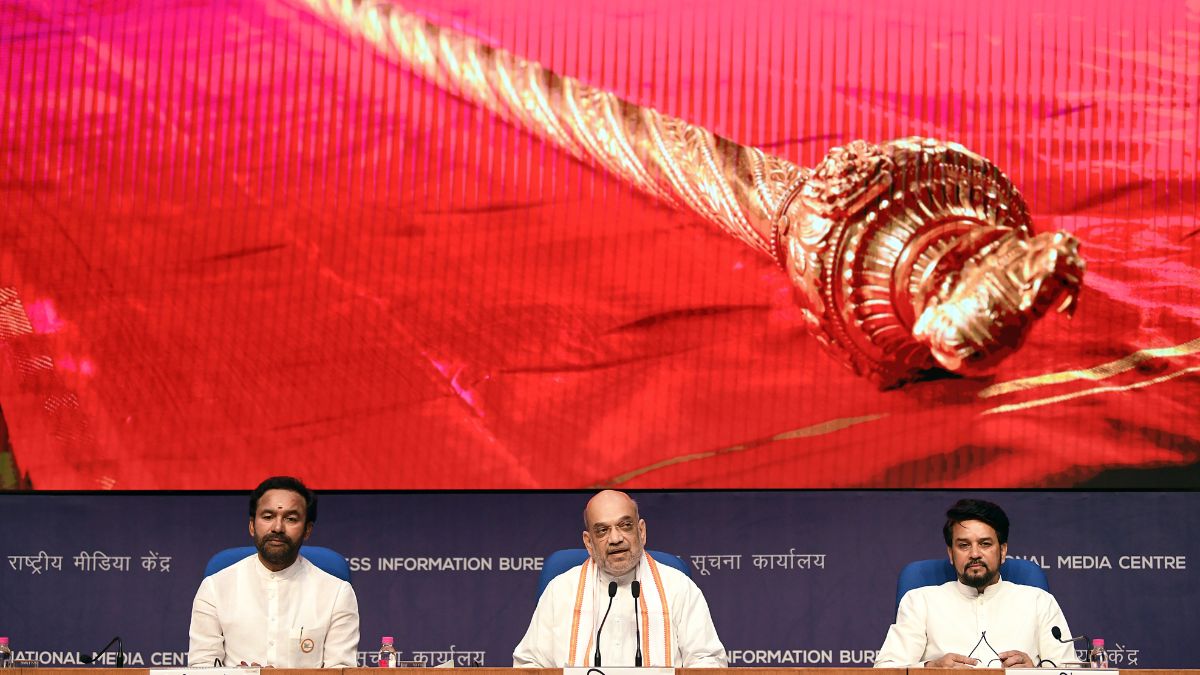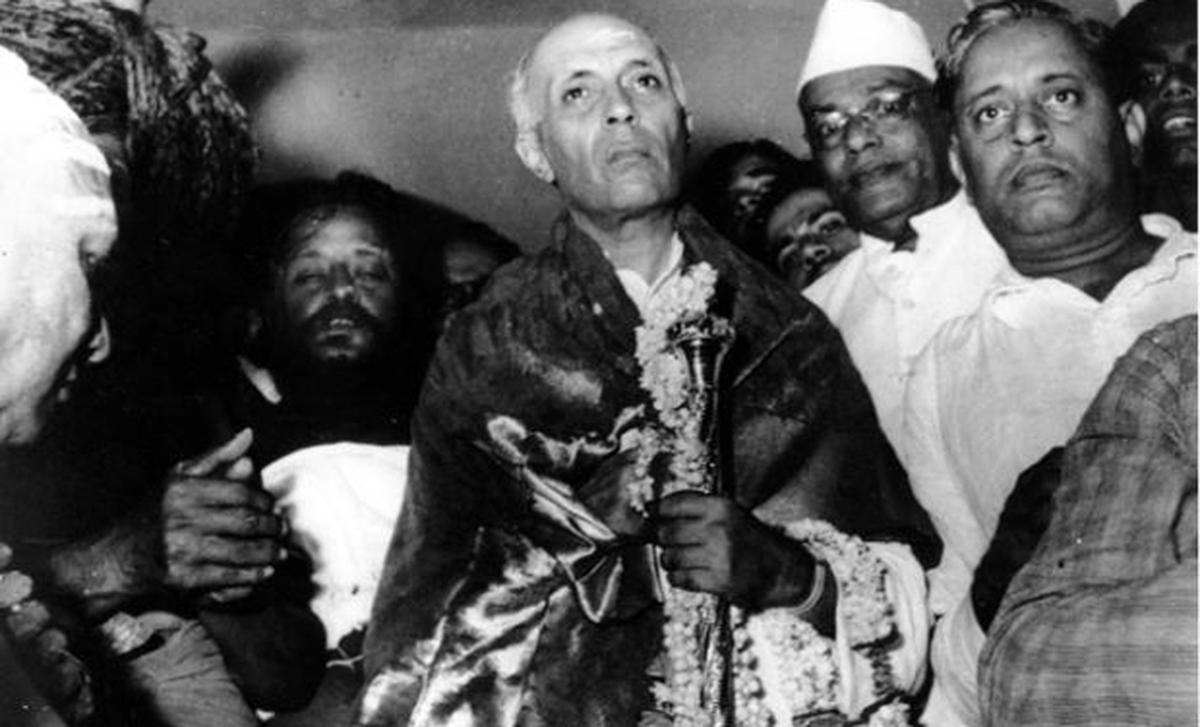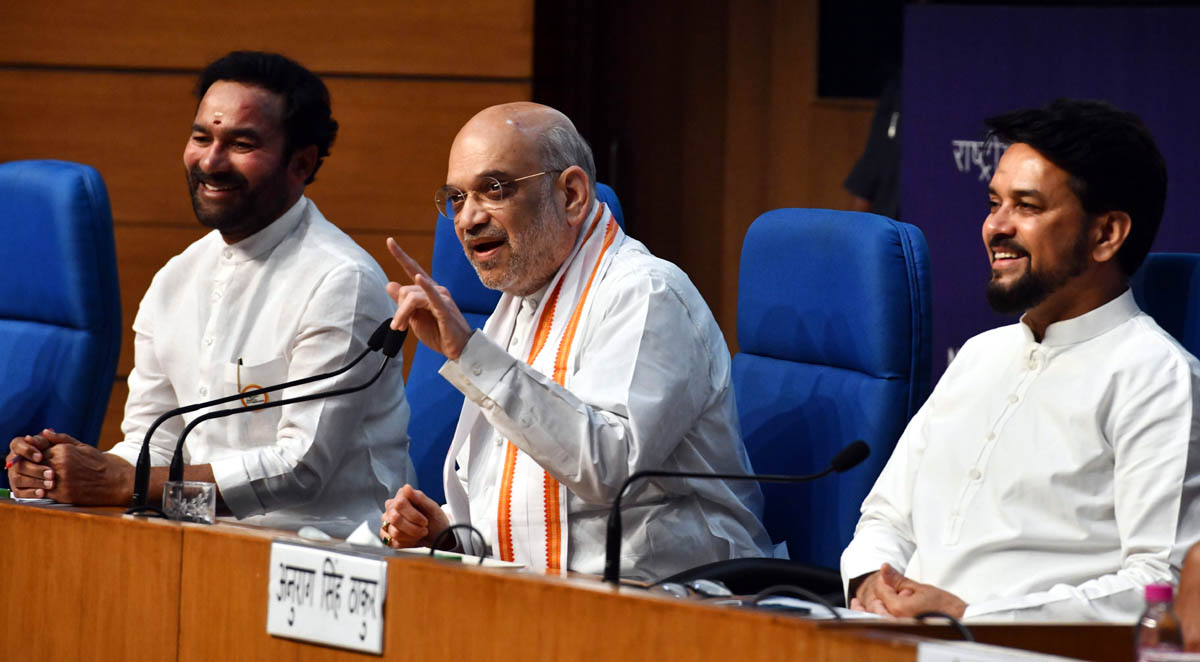‘Sengol’, A Historic Sceptre To Be Placed In New Parliament Building; What Is It?
According to Amit Shah, the Minister of Home Affairs, Sengol was handed over to India's first Prime Minister, Pt. Jawaharlal Nehru, and marked the transfer of power from the British to Indians.

This Sunday, Prime Minister Narendra Modi will officially inaugurate the new parliament by installing a historic sceptre, Sengol. It will be installed near the Speaker’s seat, Union Home Minister, Amit Shah shared.

He said that this sceptre was handed over to India’s first Prime Minister, Pandit Jawaharlal Nehru, and marked the transfer of power from the British to the Indians.
The Home Minister also mentioned that the meaning of ‘sengol’ is “righteousness”, and it is derived from the Tamil word “semmai”.
The History of Sengol
Prime Minister Nehru was asked a simple question by Lord Mountbatten, the final Viceroy of British India, which set off a series of events that resulted in the formation of the sengol.
Historical memories and news reports claim that Mountbatten questioned the incoming prime minister about the transition of authority following India’s independence.
For this, the country’s last Governor-General, C. Rajagopalachari, also known as Rajaji, was consulted for guidance by Prime Minister Nehru at that point.

He informed Prime Minister Nehru about the Tamil custom where the high priest presents a sceptre to the new king upon his accession to the throne.
It has been said that Rajaji claimed that this tradition was followed throughout the Chola era and that it would represent India’s freedom from the British Empire.
Rajaji was then given the task of preparing a sceptre for the momentous occasion.
The Making of Sengol
The task of making sengol was a huge task on its own.
Rajaji called Thiruvaduthurai Atheenam, a famous mutt in modern-day Tamil Nadu when faced with the difficult task of arranging the sceptre that will mark India’s Independence.

The mutt’s seer at the time took charge of the situation, and Vummidi Bangaru Chetty, a goldsmith in then-Madras, created the sengol for just Rs. 15,000.
The sengol is believed to be five feet long and has a “nandi” bull – a symbol of justice – on top.
The Ceremony of Handing Over
According to the archives, a senior priest of the mutt gave Mountbatten the sceptre and then took it back.

It is said to have been handed over to Prime Minister Nehru 15 minutes before midnight on August 15, 1947, after being sprinkled with Ganga Jal, and he carried it in a procession.
As Prime Minister Nehru was presented with the sceptre, a special song was written and performed.
Sengol Found Its Place in The New Parliament
The Home Minister stated that not many people were aware of the sengol and its history. And so, its installation in the new parliament would be an effort to combine the country’s cultural traditions and modernity.
According to Shah, Prime Minister Modi‘s vision is also demonstrated by his plan to set up the sengol in the new parliament.
/newsdrum-in/media/media_files/IWO5nsbYeCV0giw9mwBg.jpg)
It must be noted that the spectre is currently placed in a museum in Allahabad, and from there it would be transported to its new location, the parliament.
Moreover, the historic sengol was forgotten over the period, and it was kept in the Allahabad Museum under a misleading name. A false label placed on the sceptre read, “Golden walking stick given to Pandit Jawaharlal Nehru.”
Sengol and Politics
While some of the opposition parties are boycotting the inauguration ceremony of the new parliament, Shah said in a press release that the government has invited all, but it depends on their feelings.

Moreover, when asked how the opposition is seeing the spectre installation ceremony, he said that there’s no need to link this with politics. The sengol holds huge significance and it should not be politicized.
Shah further stated that the installation of Sengol would remind us that the administration must be run by the rule of law.
Proofread & Published By Naveenika Chauhan




